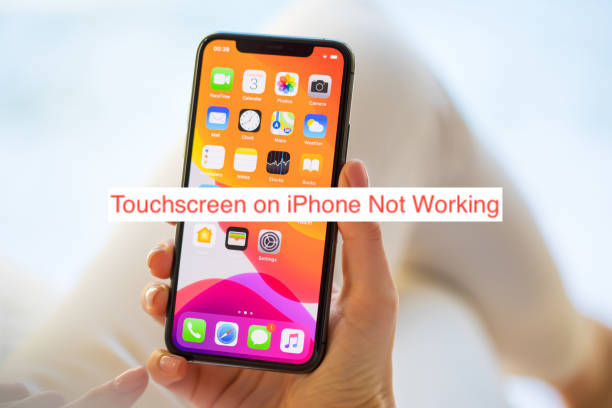The touchscreen is the primary input method on the iPhone, and it has been that way for as far back as we remember. It doesn’t matter what version of the iPhone you use, you’re in for a very frustrating experience if the touchscreen suddenly stops working.
Sometimes, the problem mightn’t be your iPhone’s touchscreen failing to work completely. There have been reports of iPhones with touchscreens that don’t respond as well as they should. Having an iPhone with an unresponsive screen is as good as having one with a screen that doesn’t work at all.
Fortunately, you don’t have to live with that. In this article, I’ll show you how to fix an iPhone with either an unresponsive or a faulty touchscreen. Note that most of the fixes here are software-based; if the problem is from the display hardware, you may have to see an authorized technician.
What causes unresponsive touch screen iPhone?
Usually, the problem is caused when the physical part of your iPhone’s display that processes touch (called the digitizer) stops working correctly or when your iPhone’s software stops “talking” to the hardware the way it should.
How to Fix Touchscreen on iPhone Not Working
There are several options to try when your iPhone’s screen suddenly stops working. Of course, the one that works for you will depend on what the problem was with your touchscreen. From having to restart your iPhone to take the phone to Apple for repair, you do not know what will fix your device.
Fortunately, you don’t need to have an idea. Instead, you can run through the tips in this article to correct your faulty iPhone touchscreen. By the time you get to the last option, you should already have it working; otherwise, you’ll have to resort to the final option.
With all that said, here are some of the best ways to try fixing the faulty touchscreen on any iPhone, iPad, iPod, or anything else that runs iOS or iPadOS.
- Restart Your iPhone
If you believe you haven’t nuked your digitizer, the primary reason your touchscreen might be faulty is an unresponsive app. When an app isn’t responding, everything you try to do on it won’t work, making it impossible to operate the phone using the touchscreen (or any other input device).
While there are other solutions to this problem, the best one would be to restart the iPhone. When you restart an iPhone, it removes all traces of the app on its memory, starting your device on a clean slate. You can then reopen the app to see if the problem will persist.
If your touchscreen works well enough to support a restart, consider a soft reboot. The soft restart involves pressing the side button and either volume button simultaneously until the power slider appears. Slide it to the right side of the screen to restart your iPhone successfully.
However, if you can’t even get your iPhone to restart, your only option might be a force restart. A force restart is simple: press the volume up button and release it instantly, do the same for the volume down button, then press and hold the side button until the Apple logo appears on your screen.
In most cases, restarting your iPhone should restore your touchscreen’s functionality, at least, until you open the problematic app again. If the problem seems to always persist with a specific app, do yourself a favor by uninstalling it.
- Clean Your iPhone’s Screen and/or Your Fingers
Your iPhone senses touch input using an electrical conductor. In short, your fingers must be able to send electrical signals to the screen for the touch functionality to work. If you have anything unable to conduct electricity between your fingers and the screen, your touchscreen may not work.
An obvious solution to that problem would be to clean your screen, removing any grime or dirt that might interfere with your touch input. Sometimes, your fingers might be the culprit, since dirty fingers usually can’t operate a touchscreen favorably.
If you have the official Apple cleaning cloth, it does the job perfectly. Otherwise, you can look for any soft microfiber clothe and use them in cleaning your device. A few wipes should restore the functionality of your unresponsive iPhone’s screen.
- Remove or Change Your Screen Protector
Sometimes, your screen protector might do a lot more than simply protecting your screen. Most times, the extra functionality of your screen protector isn’t what you want it to do, as it protects your fingers from interacting properly with your iPhone’s display.
If that is the case, you may have to replace your iPhone’s screen protector to restore the functionality of your touchscreen. Sometimes, cleaning your screen protector or replacing it might be all you need to fix your iPhone.
Besides, if you’re using an iPhone that was released recently, you probably shouldn’t worry about using a screen protector. Your iPhone’s screen can protect itself from any falls and shocks without cracking.
- See An Authorized Technician
If you still can’t get your iPhone’s touchscreen to work, you may have to take it to Apple for repair. You can get a free repair, and sometimes, a replacement if your phone is still under warranty. If you’re not under warranty protection, however, expect to pay a steep amount for the repair.
You should also note that you should always take your phone to Apple for any extensive repairs, especially if it’s still under warranty. Some of the simplest repair procedures may void your warranty, making it a bad idea to try repairing your iPhone.
Conclusion
The display is probably the most expensive component on your iPhone and you don’t want it to suddenly stop working. However, problems may happen here and there, causing it to work erratically, or sometimes, to not work at all.
When that happens, try to troubleshoot and fix whatever might be wrong with the device. This article has listed three ways to correct any issues with your iPhone’s touchscreen. If none of those work, consider taking your iPhone to Apple for repair.

